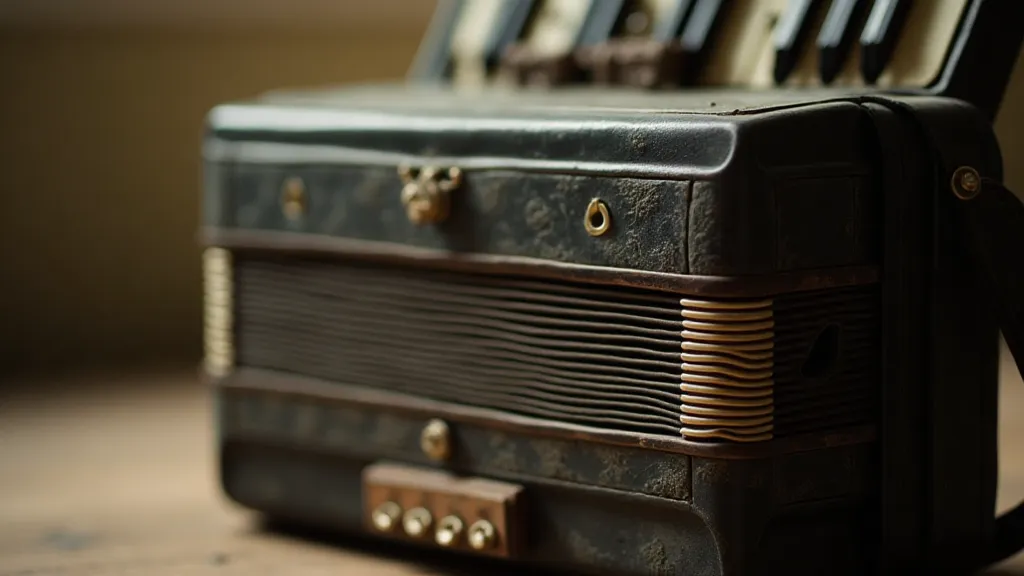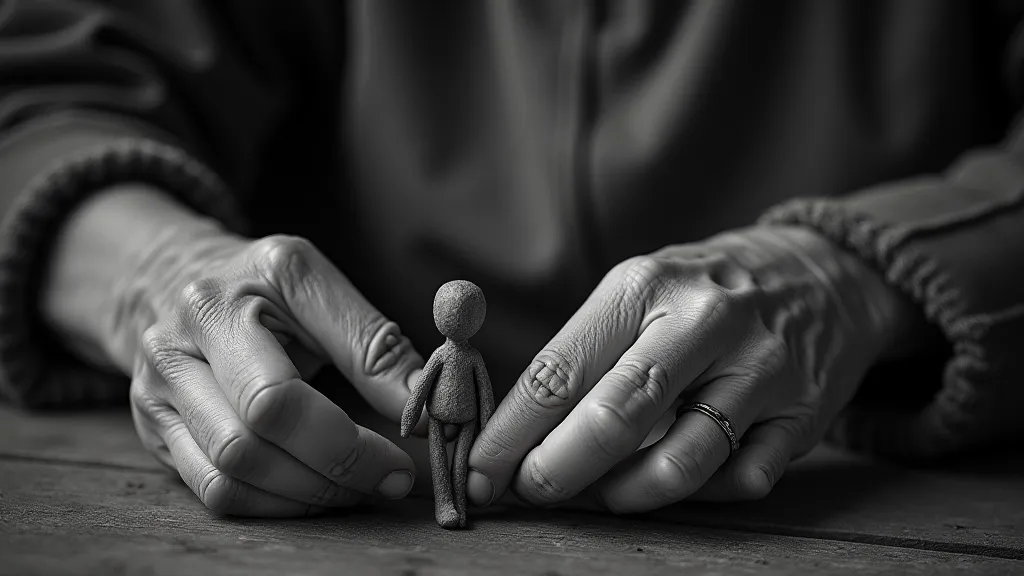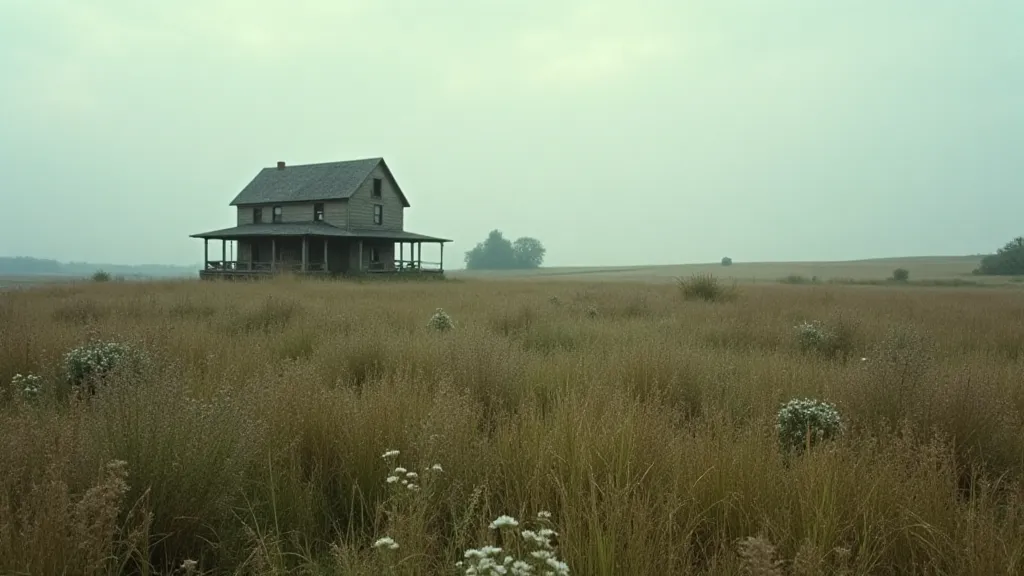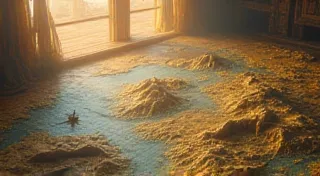Shadows of the Loom: Weaving Intergenerational Trauma into Regional Narratives
The wind carries stories. It whispers through the willows along the river, rattles the shutters of abandoned homesteads, and sighs through the reeds where generations have gathered to share tales. But some stories aren’t easily shared. They cling to the landscape, embedded in the soil and in the silences between spoken words. They are the stories of trauma, passed down not in explicit pronouncements, but in the subtle tremor of a hand, the averted gaze, the recurring dream. They are the shadows woven into the loom of regional narratives.
Consider the antique accordion. Not just as an instrument – a marvel of bellows and keys, a miniature orchestra in one’s arms – but as a repository of memory. Imagine a weathered, leather-bound accordion, its mother-of-pearl keys dulled with age, nestled in the hands of a stooped grandfather. He doesn't play a happy tune. Instead, a melancholic melody emerges, fragments of songs from a time of forced migration, of land lost, of hope deferred. The craftsmanship itself – the meticulous joining of wood and metal, the precise articulation of each reed – speaks of a dedication to beauty born from hardship. This isn’s a story told outright; it’s a feeling transmitted through the resonance of the instrument, a tangible link to a past burdened by unspoken pain.

The Weight of Unspoken History
Regional stories are rarely pristine narratives of triumph and prosperity. More often, they are palimpsests, layers of experience etched onto a landscape. The displacement of Indigenous peoples, the cycles of boom and bust fueled by extractive industries, the sting of systemic prejudice – these aren’t just historical footnotes; they are the warp and weft of a community’s identity. The silence surrounding these traumas isn't a lack of stories, but a deliberate act of protection, a way to shield younger generations from the full weight of the past. But silence, too, has a story to tell. These echoes resonate across cultures, reminiscent of the powerful myths and legends of the Scottish Highlands, where generations have striven to preserve their heritage through oral tradition and folklore.
My own family’s story, rooted in the Appalachian region, is a testament to this. We didn’t talk about the coal mines, about the accidents and the illnesses and the suffocating sense of economic dependence. We didn’t talk about the shame of poverty, the despair of unfulfilled potential. Instead, we talked about the weather, about the garden, about mundane tasks. But the silence itself spoke volumes. It created a palpable tension, a sense of something held back, a feeling of inherited sadness that permeated every family gathering. It was only years later, through painstaking research and conversations with distant relatives, that I began to piece together the fragments of a hidden history – a history of resilience, yes, but also of profound loss.
Stylistic Approaches to Conveying Trauma
For writers, the challenge lies in honoring these complex narratives respectfully and effectively. The temptation to sensationalize or exploit trauma is strong, but true artistry lies in finding ways to convey its enduring effects without resorting to simplistic portrayals. Here are a few stylistic elements that can be employed:
- Symbolism: Objects, landscapes, and natural phenomena can serve as potent symbols of trauma. A recurring image of barren land, a specific type of flower that struggles to bloom, the sound of a train whistle – these can all carry layers of meaning beyond their literal representation.
- Fragmentation: A linear narrative can feel reductive when dealing with trauma, which is rarely experienced in a straightforward manner. Fragmented timelines, shifting perspectives, and incomplete sentences can mirror the disorienting nature of traumatic memory.
- Cyclical Structure: Trauma often repeats itself across generations, manifesting in different forms but carrying the same underlying patterns. A cyclical narrative structure, where events echo and repeat, can illustrate this enduring legacy.
- Unreliable Narration: The unreliability of memory is central to the experience of trauma. Employing an unreliable narrator, whose perceptions are skewed by their past experiences, can add depth and nuance to the story.
It’s crucial to avoid tropes and clichés. A lone, grieving figure silhouetted against a dramatic sunset is a visual cliché that does little to convey the complexity of lived experience. Instead, focus on the small, seemingly insignificant details that reveal the depth of the wound – the way a character fidgets with their hands, the flicker of fear in their eyes, the tremor in their voice.

The Accordion's Lament: A Microcosm of Regional Trauma
Returning to the image of the antique accordion, consider the process of restoration. A skilled artisan might carefully dismantle the instrument, painstakingly cleaning each component, replacing damaged parts, and reassembling it with the utmost care. The process isn’t just about preserving an object; it’s about reconnecting with a history, about acknowledging the pain that shaped its creation. Similarly, writers who attempt to grapple with regional trauma must approach the task with humility and respect, recognizing that they are not simply telling a story, but participating in a process of healing.
The accordion itself can serve as a metaphor for the community. Its bellows, strained and weakened by age, represent the resilience of the people. The intricate mechanism, representing the complex interplay of personal and collective experiences. The music it produces, a lament for what has been lost, but also a celebration of the enduring human spirit. The way stories are passed down – sometimes fractured, sometimes muted – mirrors the complexities explored in compelling narratives like those found in storytelling in Quebec, where French-Canadian traditions powerfully preserve cultural identity.
Beyond Storytelling: Towards Healing and Understanding
Ultimately, storytelling about trauma isn't just about entertainment or artistic expression; it’s about fostering empathy, promoting understanding, and contributing to a process of collective healing. The methods by which narratives are preserved and recounted vary greatly. Consider the deeply ingrained art forms of places like Kerala, India, where storytelling in Kerala utilizes vibrant traditions like Kathakali to convey complex moral and historical lessons.
It also echoes themes found in the epic Icelandic sagas, which, like many regional narratives, strive to comprehend the weight of history through the experiences of individual characters and communities. These sagas, while often filled with heroic deeds, also grapple with themes of loss, displacement, and the enduring impact of the past.
The challenge for the writer is not simply to relay events but to capture the emotional and psychological toll on those who have lived through them. It’s about delving into the unspoken truths, the hidden wounds, and the enduring scars that shape a community's identity.

The wind continues to carry stories, but it’s our responsibility to listen – to truly hear the echoes of the past and to weave them into a narrative that acknowledges the pain, celebrates the resilience, and illuminates the path towards a more hopeful tomorrow.





